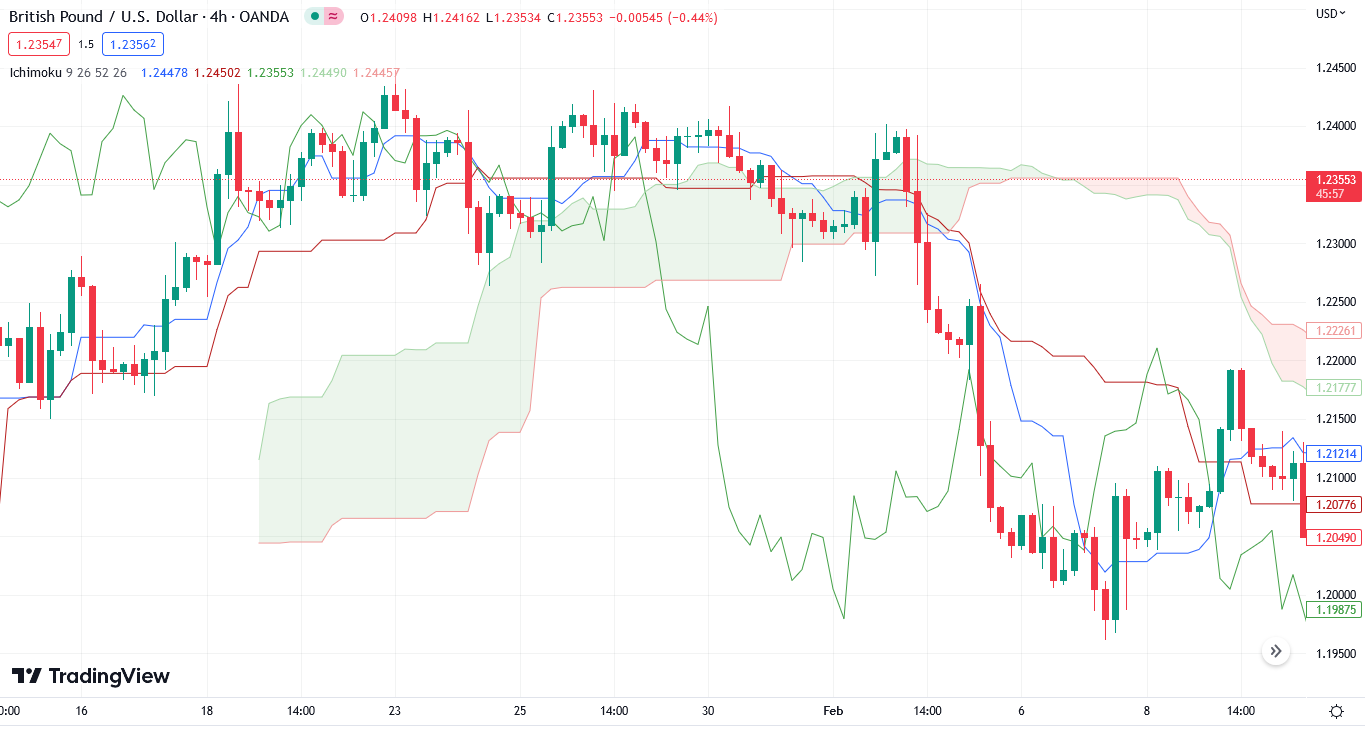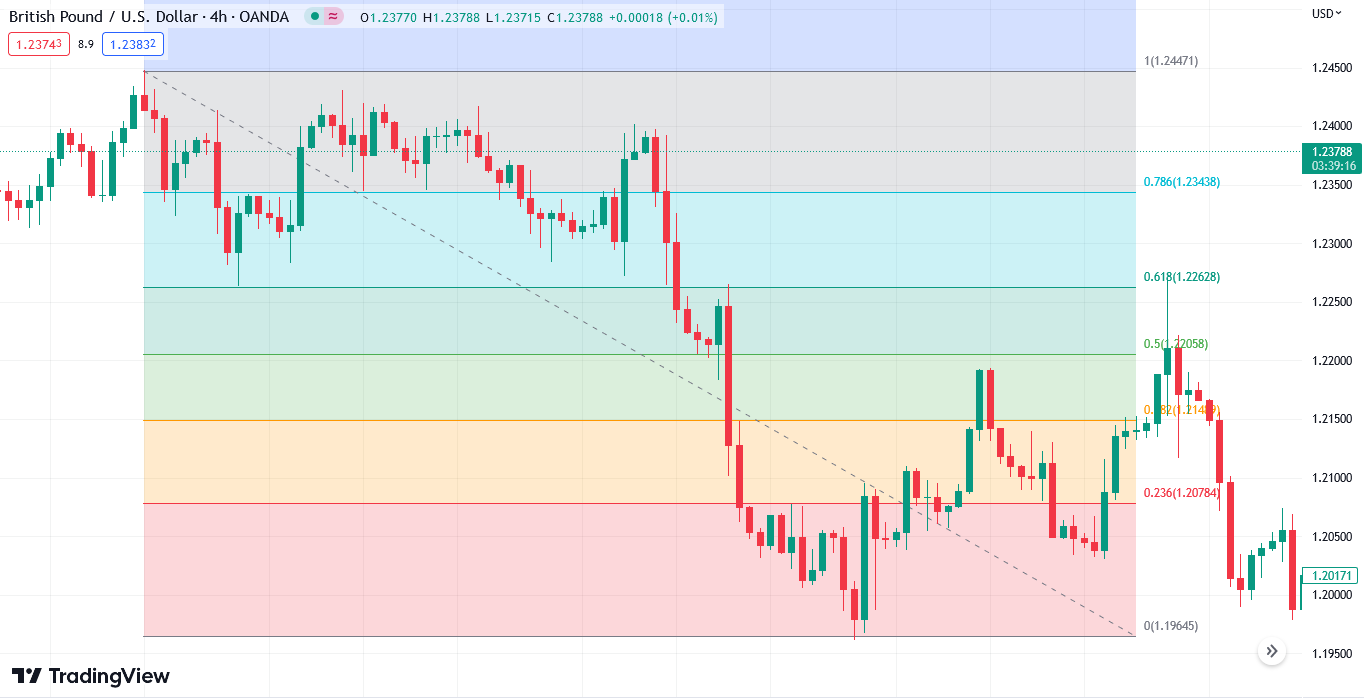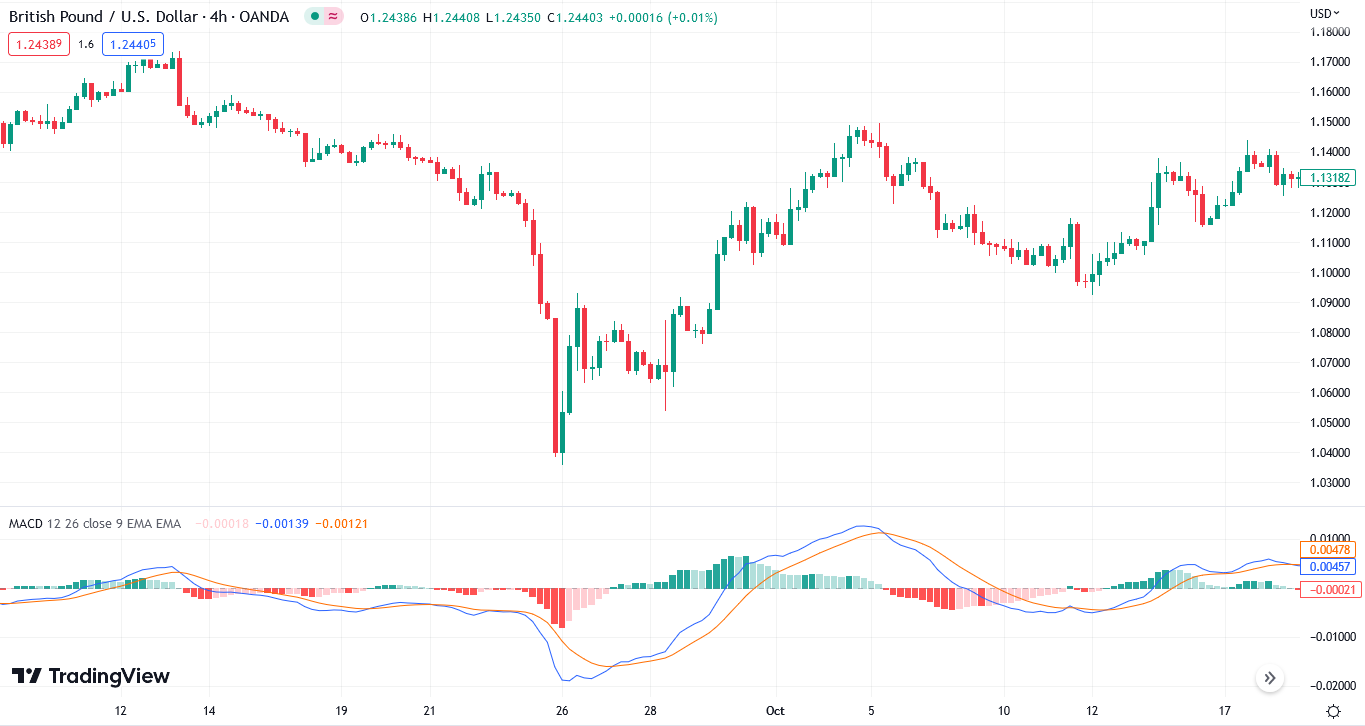Top 10 Must-Have Forex Technical Indicators That Every Trader Should Use

Or you’ve been trading for a while but want to improve your strategies.
Whatever the case, choosing the right technical indicators can be crucial to your success in the forex market.
In this article, we’ll take a closer look at some of the best forex technical indicators and how they can be used to improve your trading strategies.
What are technical indicators?
If you’re new to forex trading, technical indicators sound like something from a Star Trek movie.
But don’t worry; they’re not as complicated as they sound!
Simply put, technical indicators are mathematical calculations based on historical price and volume data that help traders analyze the market. Their calculation is based on historical patterns.
You apply these indicators to charts to visually represent market trends, patterns, and potential entry and exit points.
There are various types of technical indicators, including trend indicators, momentum indicators, volatility indicators, and volume indicators. Each type of indicator has its unique calculation methods and pros and cons.
Here’s how they work:
- Trend indicators are used to identify the direction of the market trend.
- Momentum indicators measure the strength of market trends and are used to determine potential trend reversals.
- Volatility indicators measure the range of price movements in the market.
- Volume indicators measure the number of trades taking place.
Fun fact: Did you know that the concept of technical indicators dates back to the 17th century?
The Japanese rice trader, Homma Munehisa , developed the first version of technical analysis, known as candlestick charts. Over time, candlestick charts evolved into technical indicators.
Risk Free Demo Account
Direct market access | Deal on rising and falling markets | 24-hour trading | Limit and stop loss for every trade

Top 10 Powerful Forex technical indicators
Let’s move on to the juicy part of the article and talk about the 10 best forex technical indicators.
1. Moving average
Moving averages are one of the most popular indicators in forex trading. It belongs to a family of trend indicators and tells about the overall market trend.
When we talk about the calculation, a moving average is a simple calculation that takes the average price of a currency pair over a specific period. The most commonly used periods are 20, 50, 100, and 200 days.
You can use the MA in various strategies. When the price crosses below or above the MA, it may signal a potential change in trend.
Another common strategy is to combine the two MAs.
When the short-term MA crosses above the long-term MA, it’s considered a bullish signal. On the other hand, when the short-term MA crosses below the long-term MA, it’s a sign of a downtrend.
There are different types of MAs you can use. These include;
- EMA (Exponential Moving Average)
- SMA (Simple Moving Average)
- WMA (Weighted Moving Average)
- VWMA (Volume Weighted Moving Average)
Their calculation differs slightly from the traditional MA, but the concept remains the same.

2. Ichimoku
Did you know Ichimoku was developed by a Japanese journalist named Goichi Hosoda in the late 1930s?
The indicator’s full name is Ichimoku Kinko Hyo , which roughly translates to «one glance equilibrium chart» in Japanese.
The Ichimoku indicator is unique because it contains five lines plotted on a price chart. These lines provide you with a more comprehensive view of the market and help identify potential trends and market reversals.
The 5 lines of the Ichimoku indicator are:
- Tenkan-sen: This is the faster-moving average line, calculated by averaging the highest and lowest low over the last nine periods.
- Kijun-sen: This is the slower-moving average line, calculated by averaging the highest and lowest low over the last 26 periods.
- Senkou Span A: Span A represents the midpoint between the Tenkan-sen and Kijun-sen lines and is plotted 26 periods ahead.
- Senkou Span B: Span B line mentions the midpoint of the highest high and the lowest low over the last 52 periods and is also plotted 26 periods ahead.
- Chikou Span: CS illustrates the closing price of the current candle and is plotted 26 periods back.
The Ichimoku indicator can identify support and resistance levels and trend reversals. The crossover of the Tenkan-sen and Kijun-sen lines can be used to identify potential entry and exit points.
Additionally, you can check the space between Senkou Span A, and Senkou Span B can be used to identify areas of support or resistance.

3. Relative Strength Index
Ah, the good Ol’ RSI!
RSI, or the Relative Strength Index, is another popular technical indicator used in forex trading. It identifies potential market trends and reversals. The indicator measures the strength of price movements by comparing the average gain and loss of the price over a specific period.
The RSI calculations generate a value between 0 and 100, with values above 70 indicating that a forex pair is overbought and values below 30 illustrating an oversold level.
You can use the RSI to identify potential entry and exit points. For example, if the RSI is above 70, it’s considered an overbought level, and you can go short. On the other hand, if the RSI is below 30, it’s an oversold condition, and you can go long.

4. Stochastic
We have another momentum oscillator on our list! Like the RSI, the Stochastic determines the market trends and reversals.
The Stochastic indicator consists of two lines: %K and %D. The %K line measures the current market momentum, while the %D line is a moving average of the %K line.
The indicator oscillates between 0 and 100, while values above 80 are overbought, while below 20 are oversold.
To enter the trade, when the Stochastics reach near or above 80, it signifies a bearish reversal, and you can take short positions. Conversely, if the oscillator reaches near or below 20, it suggests a bullish reversal, and you can go long.

5. Bollinger Bands
When you start trading, you’ll always hear Bollinger Bands for every beginner tutorial you watch.
Bollinger Bands consist of three lines: the upper, lower, and middle, and measure the price volatility.
- The upper and lower bands are calculated by adding and subtracting a multiple of the standard deviation of the price from the middle band.
- The middle band is a simple moving price average over a specific period.
The Bollinger Bands create a channel on the chart, with the upper and lower bands acting as support and resistance levels.
When the price moves toward the upper band, it’s considered overbought, and we can anticipate a bearish reversal. Conversely, when the price moves toward the lower band, it’s considered oversold, and we can have a bullish reversal.

6. ATR
ATR, aka Average True Range, is another technical indicator used in forex trading to measure volatility. Developed by J. Welles Wilder, ATR calculates the average range of price movement over a specific period.
If the ATR line is high, it indicates that the forex pair is experiencing high volatility. It’s important to note that there can be sharp price movements during high volatility. So, using ATR, you can adjust your strategies accordingly.
When the ATR line is low, it illustrates low volatility. Forex pairs don’t move much during low volatility, so you have to tweak your strategy according to the current market condition.

7. Fibonacci
The next one on our list is not exactly an indicator but a key technical analysis tool. The tool is based on the Fibonacci sequence, a series of numbers that appears in many natural phenomena, such as the branching of trees and spirals of seashells.
The Fibonacci retracement levels are calculated by drawing a trendline between two points on a chart and are based on the Fibonacci ratios. These ratios are 23.6%, 38.2%, 50%, 61.8%, and 100%. We can expect a price reversal whenever the price hits these key ratios.
To use the tool, first, you need to draw it properly. You start by drawing a trendline between two points on the chart, such as a recent low and a recent high. Most trading software like Mitrade Webtrader comes with an automatic Fibonacci tool, so you don’t have to do it yourself.
When drawing from a high point to a low point, you look to go short whenever the price touches Fibonacci ratios. On the other hand, when drawing from the low to the high point, you go long when the price touches key ratios.

8. Pivot Point
We have another tool on our list. Pivot points are used to identify areas of support and resistance. They’re calculated using the previous day’s high, low, and close prices and plotted on the chart as horizontal lines.
There are several types of pivot points. These include
- Standard pivot point
- Fibonacci pivot point
- Woodie pivot point
Each type uses a slightly different calculation method, but they all identify key support and resistance levels.
The most common way to trade Pivot Points is to take positions when the price reaches a pivot level.
You can take long positions if the price reaches a pivot point in an uptrend. On the other hand, if the price reaches a pivot point in a downtrend, you can enter short trades.
It’s important to note that Pivot Point comes as an indicator rather than a simple tool on many trading platforms.

9. Awesome Oscillator
The Awesome Oscillator belongs to a family of oscillators and is used to tell the trend’s momentum. The Awesome Oscillator is calculated by taking the difference between two SMAs, and it creates a histogram on the chart.
The histogram oscillates above and below a zero line, creating green and red bars on the chart. When the histogram bars are green and above the zero line, this suggests bullish momentum. On the other hand, if the bars are red and below the zero line, it mentions a bearish momentum.
You can also use the oscillator by looking for divergences. If the price makes new highs, but AO doesn’t, it signifies a bullish momentum. Conversely, if the price makes new lows, but the AO doesn’t, it shows a bearish momentum.

10. MACD
So, we have reached the end of our list of the best forex technical indicators. What better way to end the list than with the super popular indicator among forex traders?
MACD, aka, Moving Average Convergence Divergence, identifies trends and momentum.
It consists of a MACD line, a signal line, and a histogram.
When the MACD line crosses above the signal line, this is seen as bullish. Conversely, when the MACD line crosses below the signal line, it’s a sign of bullish momentum.
Like the AO, MACD’s histogram determines the market trend. When the histogram bars are green and above zero, it suggests bullish momentum. On the other hand, if the bars are red and below zero, it signifies a bearish momentum.
Like other oscillators on our list, you can use MACD to identify divergences. We have a bearish divergence if the price is making higher highs, but the MACD is making lower highs. Contrarily, if the price is making lower lows, but the MACD is making higher lows, this is called bullish divergence.

Summary of the indicators
Tells about the trend’s direction.
Uses multiple lines to show the direction of the trend.
Tells about overbought and oversold levels.
Shows overbought and oversold levels.
Mentions price volatility by plotting three bands.
Measures the price average range to show volatility.
Uses Fibonacci ratios to signify the trend’s direction.
Tells support and resistance levels.
Shows bullish and bearish momentum.
Use the moving average to show trend’s direction and momentum.
Bottom line
So, there you have it! Many technical indicators are out there, but these 10 stand out from the herd.
It’s important to note that there isn’t a single indicator that is 100% accurate. If someone is telling you this, they probably lie or have no idea about the forex indicators.
You don’t have to rely on a single indicator, you can use multiple indicators for signal confirmation and create a strategy.
If you are new to forex trading, we recommend trading on a demo account and using all the indicators and tools, and see which one is suitable for you.
Risk Free Demo Account
Direct market access | Deal on rising and falling markets | 24-hour trading | Limit and stop loss for every trade

The content presented above, whether from a third party or not, is considered as general advice only. This article should not be construed as containing investment advice, investment recommendations, an offer of or solicitation for any transactions in financial instruments.
Do you find this article useful?
Related Articles
Table of Content
Economic Calendar
Content Cooperation:
contentcollab@mitrade.com
Follow our community
References, analysis, and trading strategies are provided by the third-party provider, Trading Central, and the point of view is based on the independent assessment and judgement of the analyst, without considering the investment objectives and financial situation of the investors.
Risk Warning: Trading may result in the loss of your entire capital. Trading OTC derivatives may not be suitable for everyone. Please consider our legal disclosure documents before using our services and ensure that you understand the risks involved. You do not own or have any interest in the underlying assets.
Mitrade does not issue advice, recommendations or opinion in relation to acquiring, holding or disposing of our products. All of our products are over-the-counter derivatives over global underlying assets. Mitrade provides execution only service, acting as principal at all times.
Mitrade is a brand jointly used by multiple companies and it operates through the following companies:
Mitrade International Ltd is the issuer of the financial products that are described or available on this website. Mitrade International Ltd is authorised and regulated by Mauritius Financial Services Commission (FSC) and the licence number is GB20025791. The registered office address is 6 St Denis Street, 1st Floor River Court, Port Louis 11328, Mauritius.
Mitrade Global Pty Ltd with ABN 90 149 011 361 holds an Australian Financial Services Licence (AFSL 398528).
Mitrade Holding is authorised and regulated by Cayman Islands Monetary Authority (CIMA) and the SIB licence number is 1612446.
The information on this site is not intended for residents of the United States, Canada, Japan, New Zealand or use by any person in any country or jurisdiction where such distribution or use would be contrary to local law or regulation. Please note that English is the main language used in our services and is also the legally effective language in all of our terms and agreements. Versions in other langauges are only for reference. In the event of any discrepancy between the English version and the other versions, the English version shall prevail.
Secured by SSL. © Mitrade Copyright, All rights reserved.
https://www.mitrade.com/insights/forex/forex-basic/best-forex-technical-indicators